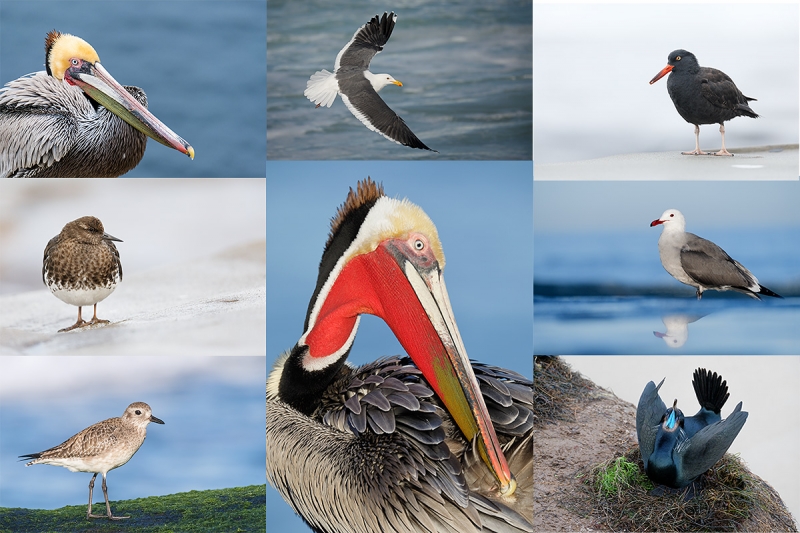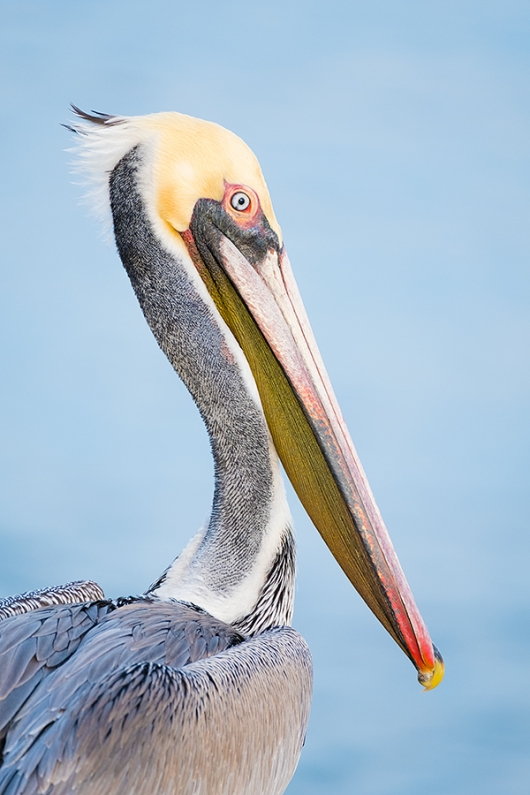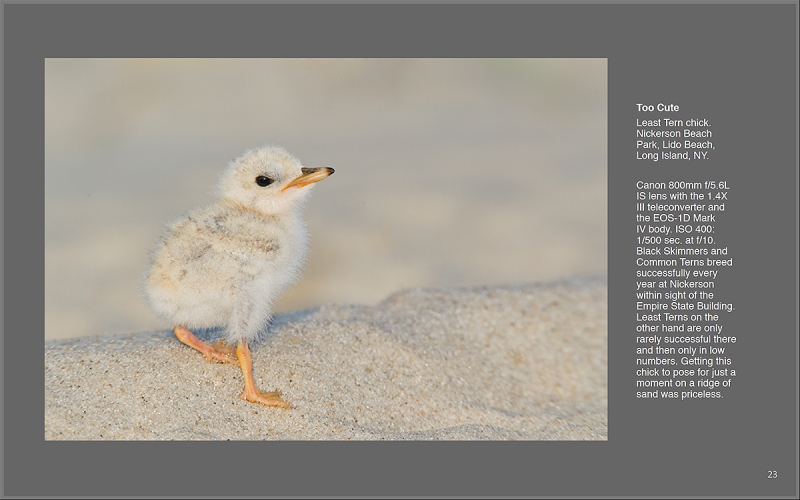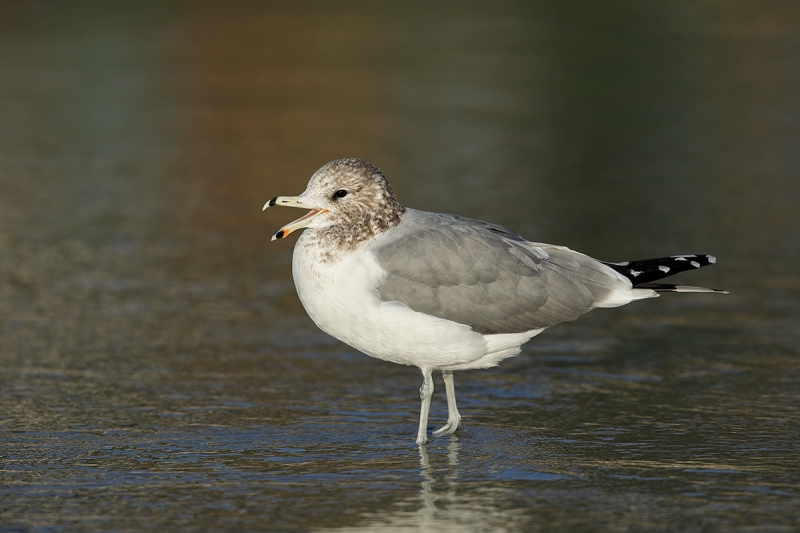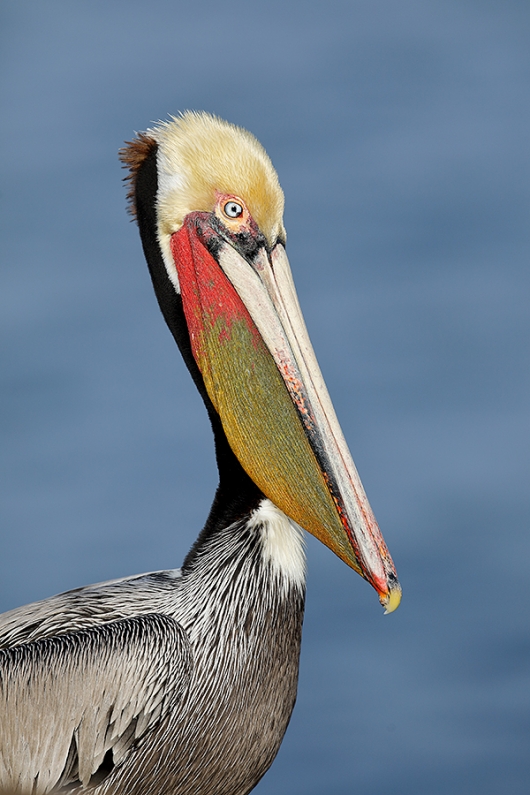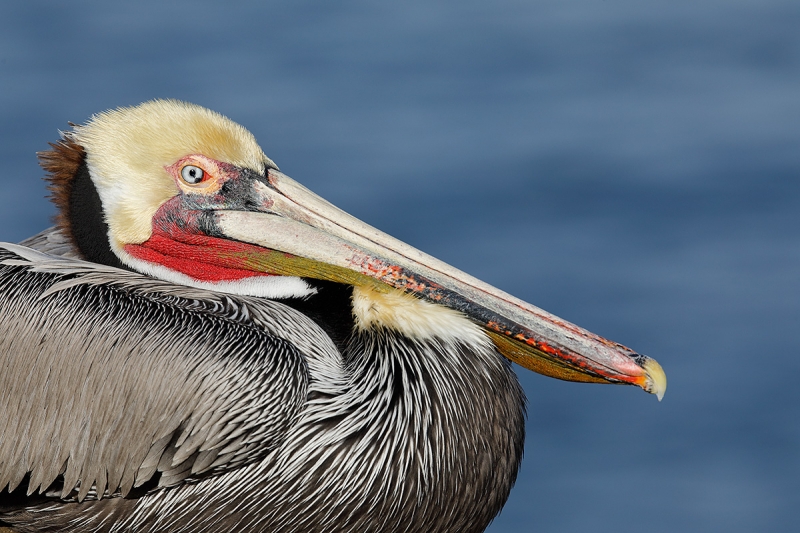October 12th, 2017 Stuff
Wednesday was a lazy day. I finished the second edit of my recent Fort DeSoto Fall IPT images, watched some MLB games on the tube, and enjoyed two easy swims totaling one mile.
With only a single slot open on the San Diego IPT, I decided to add a second San Diego IPT — shorter and less expensive. I was glad to learn that Fort DeSoto Fall IPT participant Lee Sommie was the first to sign up for San Diego #2. See the announcement in the blog post here.
|
|
2017 in San Diego was a very good year ….
|
2018 San Diego 3 1/2-DAY BIRDS AS ART IPT #2: Sunday, JAN 28 thru and including a morning session on Wednesday, JAN 31, 2018: 3 1/2 days: $1699. Limit: 8: Openings: 7
Meet and Greet at 6:30pm on the evening before the IPT begins; Saturday, Jan 27, 2018.
San Diego IPT #2: Shorter and Less Expensive!
Please remember: I go with one.
Click here for details.
The Streak
Today makes seventy-seven days in a row with a new educational blog post! This blog post took less than an hour to prepare. With all of my upcoming free time (or not …), the plan right now is to break the current record streak of (I think) four hundred eighty something … Good health and good internet connections willing.
Booking.Com
Booking.Com came through for me twice again recently with both the DeSoto Fall IPT and next July’s UK Puffins, Gannets, and Bempton Pre-trip room reservations. And all the rates were great. If you’d like to give Booking.Com a shot, click here and you will earn a $25 reward. Thanks to the many who have already tried and used this great service.


Gear Questions and Advice
Too many folks attending BAA IPTs and dozens of folks whom I see in the field, and on BPN, are–out of ignorance–using the wrong gear especially when it comes to tripods and more especially, tripod heads… Please know that I am always glad to answer your gear questions via e-mail.
Carpet Necks
Pacific race Brown Pelicans in non-breeding plumage have pure white hind-necks. In full breeding plumage they have rich, dark chocolate-colored hind-necks (like the bird in the pelican love affair blog post here). On molting birds like the one pictured above the hind-neck resembles a highly textured cut pile carpet. Years ago I affectionately nicknamed them carpet necks.
A High Level Subject to Sensor-Plane Orientation/Head Angle Question
The body of the bird in this image is oriented slightly away from me. Its head is turned a bit back towards me. Generally for this type of image I’d prefer that the head angle be 90 degrees, with the bird’s head perfectly parallel to the back of the camera. Why did I prefer the image with the head angled slightly away?
Another Fujifilm X-T2 Mirrorless Digital Camera Body Image
Regular readers will likely remember that I experimented with the Fujifilm X-T2 Mirrorless Digital Camera body on my last trip to San Diego. You can learn more about that experience in the Quite Impressive: First Fujifilm XT-2 Image blog post here and in several blog posts that followed.
This image caught my eye while going through the San Diego 2017 & all XT-2 Images to Transfer folder. The glow of the colors (luminosity?) made it stand out. I converted the image with my usual ACR workflow and in doing so I eliminated the glowing colors so I re-converted it with a much lighter touch and was happy with the results.
If In Doubt …
If in doubt about using the BAA B&H affiliate link correctly, you can always start your search by clicking here. Please note that the tracking is invisible. Web orders only. Please, however, remember to shoot me your receipt via e-mail.




Please Remember to use my Affiliate Links and to Visit the New BAA Online Store 🙂
To show your appreciation for my continuing efforts here, we ask, as always, that you get in the habit of using my B&H affiliate links on the right side of the blog for all of your photo and electronics purchases. Please check the availability of all photographic accessories in the New BIRDS AS ART Online Store, especially the Mongoose M3.6 tripod head, Wimberley lens plates, Delkin flash cards and accessories, and LensCoat stuff.
As always, we sell only what I have used, have tested, and can depend on. We will not sell you junk. We know what you need to make creating great images easy and fun. And please remember that I am always glad to answer your gear questions via e-mail.
I would of course appreciate your using our B&H affiliate links for all of your major gear, video, and electronic purchases. For the photographic stuff mentioned in the paragraph above, and for everything else in the new store, we, meaning BAA, would of course greatly appreciate your business. Here is a huge thank you to the many who have been using our links on a regular basis and those who will be visiting the New BIRDS AS ART Online Store as well.
Amazon.com
Those who prefer to support BAA by shopping with Amazon may use the logo link above.
Amazon Canada
Many kind folks from north of the border, eh, have e-mailed stating that they would love to help us out by using one of our affiliate links but that living in Canada and doing so presents numerous problems. Now, they can help us out by using our Amazon Canada affiliate link by starting their searches by clicking here.
Facebook
Be sure to like and follow BAA on Facebook by clicking on the logo link upper right. Tanks a stack.
Typos
In all blog posts and Bulletins, feel free to e-mail or to leave a comment regarding any typos or errors. Just be right :).
October 11th, 2017 Stuff
On Tuesday I had a lunch appointment at noon with my tax guy in Lakeland. Before and after that it was back to business as usual: answering e-mails and doing blog posts. And a swim and lots of exercise. I was glad to learn that the sale of Stephen November’s Canon EF 200-400mm f/4L IS USM Lens with Internal 1.4x Extender in near-mint condition for $8399 was finalized.
With only a single slot open on the San Diego IPT, I decided to add a second San Diego IPT — shorter and less expensive. See the announcement in yesterday’s blog post here.
|
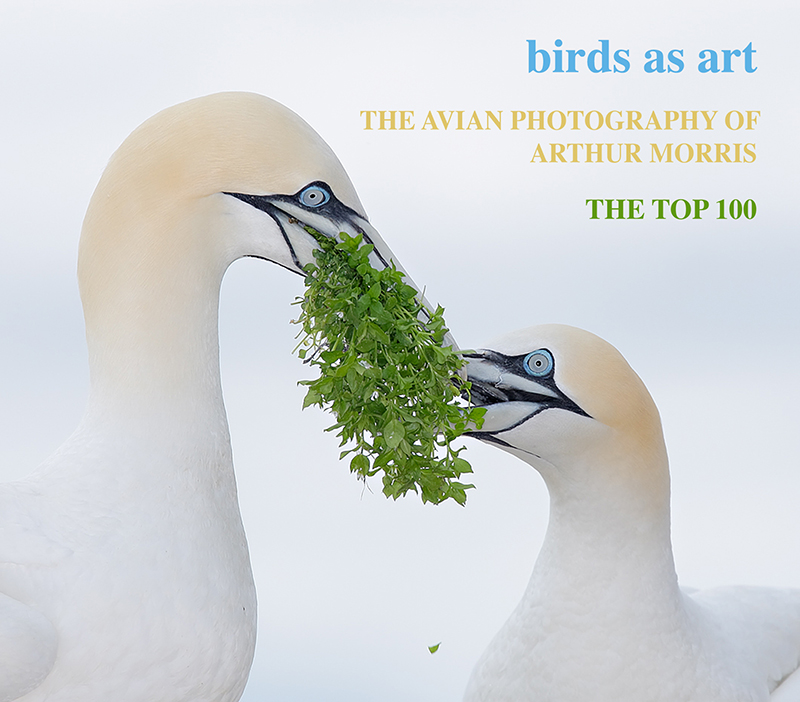
|
birds as art: The Avian Photography of Arthur Morris/The Top 100
The companion e-book to the solo exhibit at TheNat, San Diego, California
birds as art: The Avian Photography of Arthur Morris/The Top 100
|
The e-book on CD is available for $20 on CD here or via download here. Studying great images is the best way to learn to improve your bird photography (he said modestly).
|
|
Least Tern chick with the 800 f/5.6, the 1.4X II TC, and the 1D Mark IV.
A sample page from the Top 100 e-book.
The Canon 800mm f/5.6L IS was one of my very favorite super-telephoto lenses. In the original The Art of Bird Photography I advised that it is generally better to choose a longer faster lens over a shorter, slower one …
|
Canon EF 800mm f/5.6L IS USM Lens
Steve Cashell is offering a Canon EF 800mm f/5.6L IS USM lens in near-mint condition for a very low $8399. The sale includes the rear lens cap, the E-180C front lens cover, the lens trunk with both keys, a Really Right Stuff LCF-51 lens foot, a Camo LensCoat, and insured ground shipping via major courier to US addresses only.
Your item will not ship until your check clears unless other arrangements are made.
Please contact Steve via e-mail or by phone at 1-734-693-4242 (Eastern time).
I owned and used the super-sharp 800mm f/5.6, often with a 1.4X TC, as my go-to super-telephoto lens for almost five years. If you work with birds that are tough to approach and have trouble making sharp images with the 2X III TC, this lens should have your name on it. The 800/5.6 is great from the car or from a blind. I was astounded when I counted to learn that 15 of the 67 images in my San Diego exhibit were created with my 800 … Note that the 800 and a 7D Mark II get you out to 1280mm. Add the 1.4X III TC and you wind up at 1792mm, almost 36X … They 800s sell new right now for $12,999 from B&H. B&H has a used one in similar condition for the insanely high price of $9,499.95. That gives you a choice: save $4,600 off the cost of a new one or $1,100.95 off the price of a used one … artie
|
|
2017 in San Diego was a very good year ….
|
2018 San Diego 3 1/2-DAY BIRDS AS ART IPT #2: Sunday, JAN 28 thru and including a morning session on Wednesday, JAN 31, 2018: 3 1/2 days: $1699.
Limit: 8: Openings: 8
Meet and Greet at 6:30pm on the evening before the IPT begins; Saturday, Jan 27, 2018.
San Diego IPT #2: Shorter and Less Expensive!
Please remember: I go with one.
Click here for details.
The Streak
Today makes seventy-six days in a row with a new educational blog post! This blog post took less than an hour to prepare. With all of my upcoming free time (or not …), the plan right now is to break the current record streak of (I think) four hundred eighty something … Good health and good internet connections willing.
Booking.Com
Booking.Com came through for me twice again recently with both the DeSoto Fall IPT and next July’s UK Puffins, Gannets, and Bempton Pre-trip room reservations. And all the rates were great. If you’d like to give Booking.Com a shot, click here and you will earn a $25 reward. Thanks to the many who have already tried and used this great service.


Gear Questions and Advice
Too many folks attending BAA IPTs and dozens of folks whom I see in the field, and on BPN, are–out of ignorance–using the wrong gear especially when it comes to tripods and more especially, tripod heads… Please know that I am always glad to answer your gear questions via e-mail.
Subject to Sensor-Plane Orientation Considerations
One of the first things that I consider when evaluating a situation is the subject to sensor-plane orientation. Ideal is having the bird perfectly parallel to the back of the camera. On sunny days, the subject to sensor-plane orientation will largely be determined by the wind. If the sun is in the east and the wind is from the north or south the bird will almost always be just right: 90 degrees to the light. Simply get on sun angle and the subject to sensor-plane orientation will be perfect. If the sun is out and behind you and the wind is in your face you will be shooting up the bird’s butt; i.e., not good! On cloudy days it is much easier to get the bird square to the back of your camera simply by changing your position. Understand, however, that on cloudy, somewhat bright days the light will still have direction … When both the light and the wind are behind you the subject will, to varying degrees, be facing you. Best is head-on, dead-on with the subject looking right down the lens barrel. Think getting close and making verticals in those situations. When the bird is angled toward you it is easy to create awkward compositions so be sure to consider the light and your perspective carefully when designing your images.
At times, when the light is relatively soft, a good strategy may be to to work slightly off sun angle — usually no more than 15 degrees for me, so that you can work with the bird perfectly parallel to the back of the camera.
A High Level Question on Choosing Your Perspective Carefully …
For today’s featured image the gull was angled slightly towards me; i.e., the head of the bird is a bit closer to me than the tail. Why didn’t I move a yard to my right to square the bird up perfectly?
If In Doubt …
If in doubt about using the BAA B&H affiliate link correctly, you can always start your search by clicking here. Please note that the tracking is invisible. Web orders only. Please, however, remember to shoot me your receipt via e-mail.




Please Remember to use my Affiliate Links and to Visit the New BAA Online Store 🙂
To show your appreciation for my continuing efforts here, we ask, as always, that you get in the habit of using my B&H affiliate links on the right side of the blog for all of your photo and electronics purchases. Please check the availability of all photographic accessories in the New BIRDS AS ART Online Store, especially the Mongoose M3.6 tripod head, Wimberley lens plates, Delkin flash cards and accessories, and LensCoat stuff.
As always, we sell only what I have used, have tested, and can depend on. We will not sell you junk. We know what you need to make creating great images easy and fun. And please remember that I am always glad to answer your gear questions via e-mail.
I would of course appreciate your using our B&H affiliate links for all of your major gear, video, and electronic purchases. For the photographic stuff mentioned in the paragraph above, and for everything else in the new store, we, meaning BAA, would of course greatly appreciate your business. Here is a huge thank you to the many who have been using our links on a regular basis and those who will be visiting the New BIRDS AS ART Online Store as well.
Amazon.com
Those who prefer to support BAA by shopping with Amazon may use the logo link above.
Amazon Canada
Many kind folks from north of the border, eh, have e-mailed stating that they would love to help us out by using one of our affiliate links but that living in Canada and doing so presents numerous problems. Now, they can help us out by using our Amazon Canada affiliate link by starting their searches by clicking here.
Facebook
Be sure to like and follow BAA on Facebook by clicking on the logo link upper right. Tanks a stack.
Typos
In all blog posts and Bulletins, feel free to e-mail or to leave a comment regarding any typos or errors. Just be right :).
October 10th, 2017 Stuff
Sunday was a lazy day of rest and NFL football on the tube. On Monday it was back to business as usual: work, work, and more work, answering e-mails and doing blog posts. And a swim and lots of exercise.
With only a single slot open on the San Diego IPT I decided to add a second San Diego IPT — shorter and less expensive. The announcement with details follows immediately below.
|
|
2017 in San Diego was a very good year ….
|
2018 San Diego 3 1/2-DAY BIRDS AS ART IPT #2: Sunday, JAN 28 thru and including a morning session on Wednesday, JAN 31, 2018: 3 1/2 days: $1699.
Limit: 8: Openings: 8
Meet and Greet at 6:30pm on the evening before the IPT begins; Saturday, Jan 27, 2018.
San Diego IPT #2: Shorter and Less Expensive!
Please remember: I go with one.
Join me in San Diego near the end of January to photograph the spectacular breeding plumage Brown Pelicans with their fire-engine red and olive green bill pouches; Brandt’s (usually nesting and displaying) and Double-crested Cormorants; breeding plumage Ring-necked Duck; other duck species possible including Lesser Scaup, Redhead, Wood Duck and Surf Scoter; a variety of gulls including Western, California, and the gorgeous Heerman’s, all in full breeding plumage; shorebirds including Marbled Godwit, Whimbrel, Willet, Sanderling and Black-bellied Plover; many others possible including Least, Western, and Spotted Sandpiper, Black and Ruddy Turnstone, Semipalmated Plover, and Surfbird; Harbor Seal (depending on the current regulations) and California Sea Lion; and Bird of Paradise flowers. And as you can see by studying the two IPT cards there are some nice bird-scape and landscape opportunities as well. Please note: formerly dependable, both Wood Duck and Marbled Godwit have been declining at their usual locations for the past two years …
|

|
|
San Diego offers a wealth of very attractive natural history subjects. With annual visits spanning more than three decades I have lot of experience there….
|
With gorgeous subjects just sitting there waiting to have their pictures taken, photographing the pelicans on the cliffs is about as easy as nature photography gets. With the winds from the east almost every morning there is usually some excellent flight photography. And the pelicans are almost always doing something interesting: preening, scratching, bill pouch cleaning, or squabbling. And then there are those crazy head throws that are thought to be a form of intra-flock communication. You can do most of your photography with an 80- or 100-400 lens …
Did I mention that there are wealth of great birds and natural history subjects in San Diego in winter?
|

|
|
Though the pelicans will be the stars of the show on this IPT there will be many other handsome and captivating subjects in wonderful settings.
|
The San Diego Details
This IPT will include four 3 1/2 hour morning photo sessions, three 2 1/2 hour afternoon photo sessions, three lunches, and after-lunch image review and Photoshop sessions. To ensure early starts, breakfasts will be your responsibility. Dinners are on your own so that we can get some sleep.
A $599 non-refundable deposit is required to hold your slot for this IPT. You can send a check (made out to “Arthur Morris) to us at BIRDS AS ART, PO Box 7245, Indian Lake Estates, FL, 33855. Or call Jim or Jennifer at the office with a credit card at 863-692-0906. Your balance, payable only by check, will be due on 11/1/2016. If we do not receive your check for the balance on or before the due date we will try to fill your spot from the waiting list. Please print, complete, and sign the form that is linked to here and shoot it to us along with your deposit check. If you register by phone, please print, complete and sign the form as noted above and either mail it to us or e-mail the scan. If you have any questions, please feel free to contact me via e-mail.
The Streak
Today makes seventy-five days in a row with a new educational blog post! This blog post took less than two hours to prepare. With all of my upcoming free time (or not …), the plan right now is to break the current record streak of (I think) four hundred eighty something … Good health and good internet connections willing.
Booking.Com
Booking.Com came through for me twice again recently with both the DeSoto Fall IPT and next July’s UK Puffins, Gannets, and Bempton Pre-trip room reservations. And all the rates were great. If you’d like to give Booking.Com a shot, click here and you will earn a $25 reward. Thanks to the many who have already tried and used this great service.


Gear Questions and Advice
Too many folks attending BAA IPTs and dozens of folks whom I see in the field, and on BPN, are–out of ignorance–using the wrong gear especially when it comes to tripods and more especially, tripod heads… Please know that I am always glad to answer your gear questions via e-mail.
Still in Love With Pacific-race Brown Pelicans
After viewing and photographing Pacific-race Brown Pelican for more than forty years, I am still mega-excited about my upcoming San Diego visit. Their fire-engine red and olive-green bill pouches set against distant backgrounds of Pacific-blue in early morning light is a dramatic and compelling combination. Throw in the challenge of creating a perfect head-throw image and there is no place I would rather be at the start of a new year.
If you would like to learn to make images like this and have multiple opportunities to do so, scroll up and consider joining me in San Diego this January.
|
|
|
This image was created on the 2017 San Diego IPT about 30 minutes after the image above. Again I used the Induro GIT304L Grand Series 3 Stealth Carbon Fiber Tripod/Mongoose M3.6-mounted Canon EF 500mm f/4L IS II USM lens, the Canon Extender EF 1.4X III, and my favorite pelican photography camera body, the Canon EOS 5D Mark IV. ISO 800. Evaluative metering -1/3 stop: 1/500 sec. at f/13 in Manual mode. Daylight WB.
LensAlign/FocusTune micro-adjustment: -1.
Two rows up and five to the left of the center AF point up/AI Servo/Expand/Shutter Button AF was active at the moment of exposure. The selected AF point was just below the bird’s eye. Click on the image to enjoy a larger version.
Image #2: Pacific race Brown Pelican in stunning breeding plumage/horizontal
|
The Relationship Between Aperture and Background
Which of today’s two featured images has a softer, sweeter background. Why? (Note: I was actually closer to the pelican in Image #2.)
Aperture Question
Why did I stop down all the way to f/13 for Image #2?
Bird Question
Is the bird in Image #1 the same individual as the bird in Image #2? Either way, how do you know for sure?
Your Favorite?
Which of today’s two featured images is do you think is the stronger image? Be sure to let us know why you made your choice. Of the two, I have a very clear favorite.
If In Doubt …
If in doubt about using the BAA B&H affiliate link correctly, you can always start your search by clicking here. Please note that the tracking is invisible. Web orders only. Please, however, remember to shoot me your receipt via e-mail.




Please Remember to use my Affiliate Links and to Visit the New BAA Online Store 🙂
To show your appreciation for my continuing efforts here, we ask, as always, that you get in the habit of using my B&H affiliate links on the right side of the blog for all of your photo and electronics purchases. Please check the availability of all photographic accessories in the New BIRDS AS ART Online Store, especially the Mongoose M3.6 tripod head, Wimberley lens plates, Delkin flash cards and accessories, and LensCoat stuff.
As always, we sell only what I have used, have tested, and can depend on. We will not sell you junk. We know what you need to make creating great images easy and fun. And please remember that I am always glad to answer your gear questions via e-mail.
I would of course appreciate your using our B&H affiliate links for all of your major gear, video, and electronic purchases. For the photographic stuff mentioned in the paragraph above, and for everything else in the new store, we, meaning BAA, would of course greatly appreciate your business. Here is a huge thank you to the many who have been using our links on a regular basis and those who will be visiting the New BIRDS AS ART Online Store as well.
Amazon.com
Those who prefer to support BAA by shopping with Amazon may use the logo link above.
Amazon Canada
Many kind folks from north of the border, eh, have e-mailed stating that they would love to help us out by using one of our affiliate links but that living in Canada and doing so presents numerous problems. Now, they can help us out by using our Amazon Canada affiliate link by starting their searches by clicking here.
Facebook
Be sure to like and follow BAA on Facebook by clicking on the logo link upper right. Tanks a stack.
Typos
In all blog posts and Bulletins, feel free to e-mail or to leave a comment regarding any typos or errors. Just be right :).
|
|







